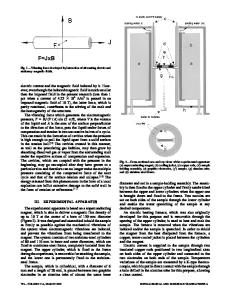Effects of intensity and frequency of erbium, chromium:yttrium-scandium-gallium-garnet (Er,Cr:YSGG) laser irradiation on
- PDF / 949,815 Bytes
- 7 Pages / 595.276 x 790.866 pts Page_size
- 24 Downloads / 301 Views
ORIGINAL ARTICLE
Effects of intensity and frequency of erbium, chromium:yttrium-scandium-gallium-garnet (Er,Cr:YSGG) laser irradiation on tooth ablation Koichi Shinkai 1
&
Masaya Suzuki 1 & Shiro Suzuki 1
Received: 15 December 2019 / Accepted: 20 July 2020 # Springer Nature Switzerland AG 2020
Abstract Objectives This study was aimed to examine the effects of intensity and frequency on the cutting efficiency of the Er,Cr:YSGG laser in the enamel and dentin. Methods The percentage of air/water in spray during laser irradiation was fixed at 85%/75% for the enamel and dentin surfaces. Nine points on flattened surfaces of the enamel and dentin were irradiated with the Er,Cr:YSGG laser for approximately 1 s using various intensities (3.0, 4.0, and 5.0 W for enamel, 2.0, 2.5, and 3.0 for dentin) and frequencies (20, 30, and 40 Hz) (n = 10). A high-speed video microscope was used to record each laser irradiation on the tooth surface. A slow video image was used to count the number of water micro-explosions yielded on the tooth surface during the laser irradiation. A surface roughness tester was used to measure the depth of the tiny dimple developed by the laser irradiation on each specimen. The value of each dimple depth was divided by the number of water micro-explosions (pulse). This allowed for the calculation of the cutting depth per pulse. Data were statistically analyzed with two-way analysis of variance. Following laser irradiation, several representative specimens were observed using a scanning electron microscope. Results Significant effects of both intensity and frequency of the laser irradiation on the cutting depths of the enamel and dentin surfaces were observed (p < 0.05). The values of the cutting depths per pulse in the high-intensity groups were significantly larger than those in the low-intensity groups for both enamel and dentin (p < 0.05). The value of the cutting depth per pulse at high frequency was significantly smaller than that at low frequency for both enamel and dentin (p < 0.05). Conclusion Both intensity and frequency of the laser had significant effects on the cutting of the enamel and dentin; the cutting efficiency was increased when the intensity increased and the frequency decreased. Keywords Er,Cr:YSGG laser . Tooth cutting . Intensity . Frequency . High-speed camera
Introduction The mechanism of tooth cutting using a mid-infrared laser was explained by the absorption of the laser beam on to the tooth substrate (including the aqueous components), followed by the destruction of the tooth structure due to the microexplosion of the water. However, this theory is unacceptable owing to the following reasons: approximately one-half of the * Koichi Shinkai [email protected] 1
Department of Operative Dentistry, The Nippon Dental University School of Life Dentistry at Niigata, 1-8 Hamaura-cho, Chuo-ku, Niigata 951-8580, Japan
water in the tooth substrate is diffusible; the process of water diffusion is slow; and the removal of water from the tooth structure would require temperatures
Data Loading...









